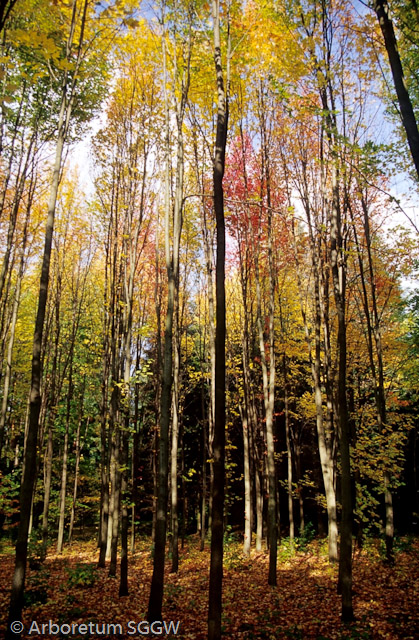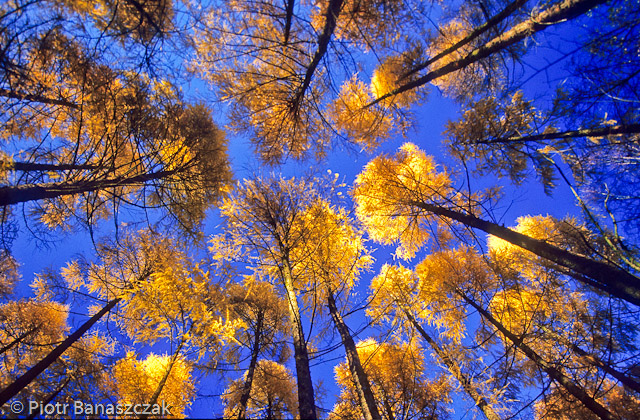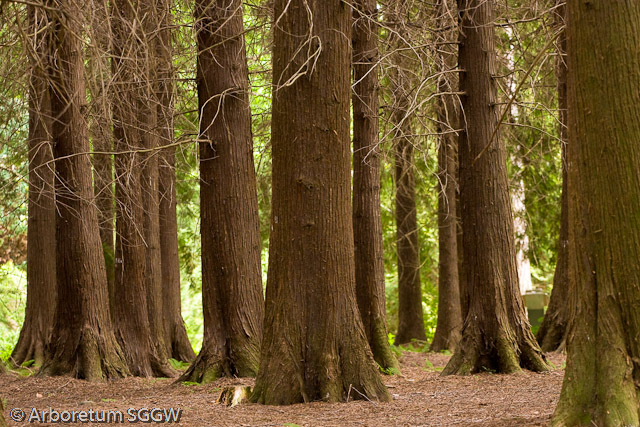Views: 40
The Experimental
Forestry Plots
Tourist's essentials
The Experimental Forestry Plots
The experimental forestry plots are smallish plots of foreign species of trees, established for experimental purposes. The trees planted here are subjected to study and observation, with a view to checking the growth, health and productivity of particular species for purposes of forest economy.
There are approximately 130 experimental plots, with an average area of 0.1 ha (0.05 - 0.5 ha), in the Rogów Arboretum. They stretch over more than 18ha and are located in the northern and eastern parts of the garden. 75 species of trees, foreign in origin are planted here, the majority of which, over 50 in all, are conifers. Deciduous trees play a secondary role in forest economy and thus their study is restricted.
Some of the trees were planted under the canopy of stands of trees and others in the open.
Trees which produce exceptionally good results under cultivation in Europe are planted in greater numbers within the area in order to assess their sensitivity to a variety of conditions including soil and light. The primary focus here is on three, fast-growing, North American species, Pseudotsuga menziesii, Thuja plicata and Abies grandis.
Several other species of the Abies, Picea and Larix are also cultivated within the area.
The plots holding Chamaecyparis pisifera, Pinus ponderosa, and Tsuga heterophylla present a truly picturesque display. After several dozen years of cultivating particular species, an initial assessment of their usefulness to the forest economy is carried out.



